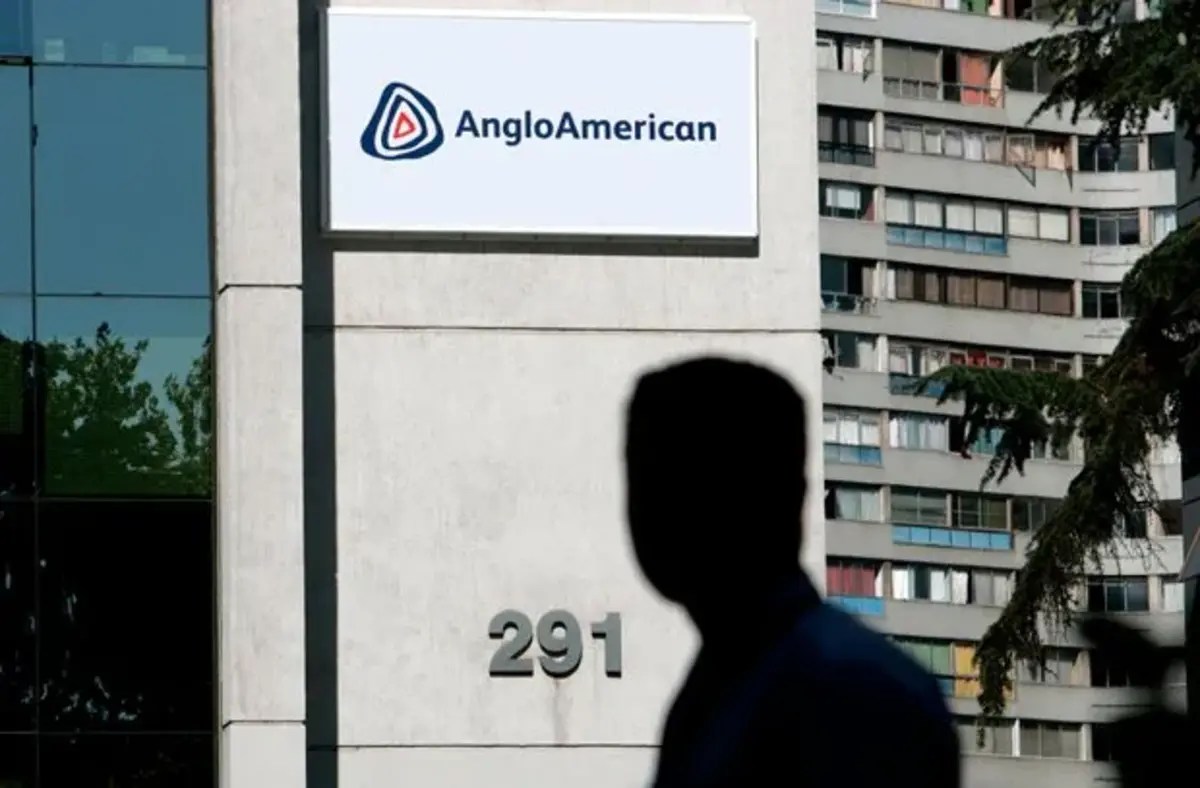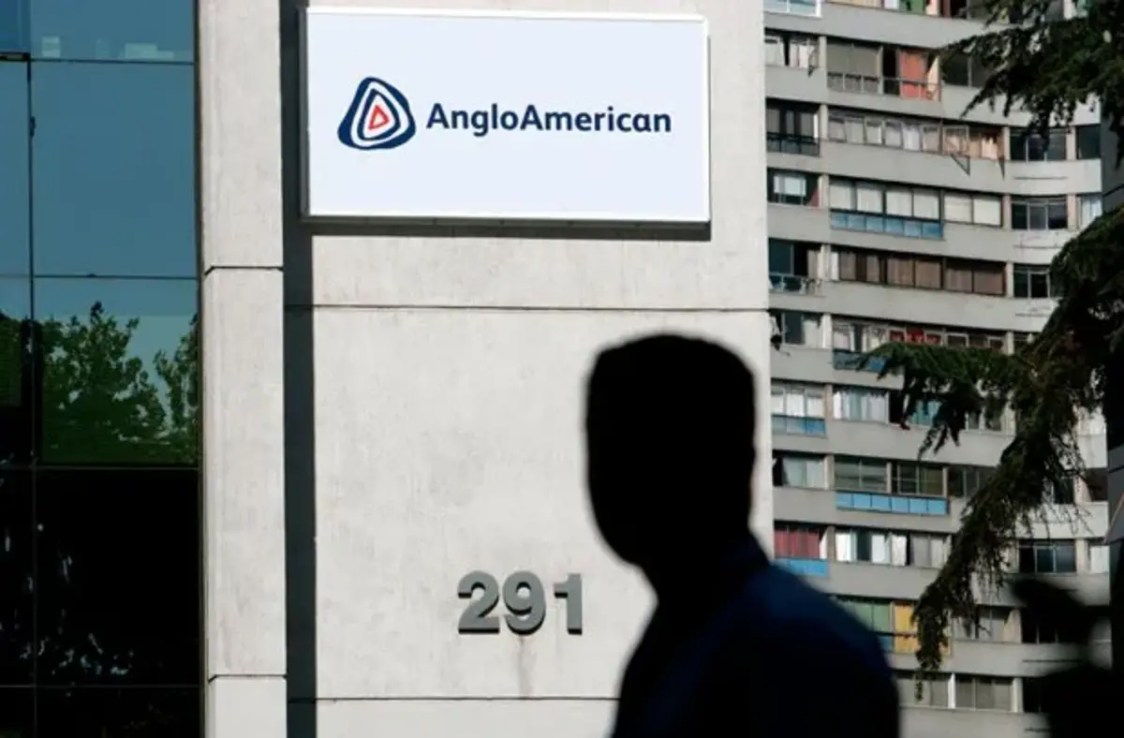Slumping profits, massive writedowns and a crumbling valuation – what’s happening with Anglo American?
Anglo American is struggling from falling diamond and platium prices as well as instability in South Africa.


In 2021, Anglo American reported record revenue of $41.6bn (£32.8bn) and underlying earnings before interest, taxes, depreciation, and amortisation (EBITDA) of $20.6bn (£16.3). But this windfall proved to be short-lived.
Underlying EBITDA dropped to $14.5bn (£11.4) in 2022 and fell a further 31 per cent in 2023 to just under $10bn (£7.9bn).
As profit has slumped, the value of the company has followed suit – shares in the company have lost 40 per cent of their value in the past year.
And as troubles have mounted, rumours of a hostile takeover have started to emerge.
The company has blamed “cyclical lows” in the markets for Platinum Group Metals (PGM) and diamonds for its slump in revenue and profit, but what does that really mean?
Revenue from PGMs has dropped to $6.7bn (£5.3bn) in 2023, down from $10bn (£7.9bn) in 2022.
Anglo American Platinum (Amplats), the PGM business Anglo American has a 79 per cent stake in, reported a fall in profits to R13bn (£530m) in 2023, down by 71% from R49.2bn (£2bn) in 2022. Amplats’ shares, listed in Johannesburg, have fallen by over 20 per cent in the last year.
Earlier this week, the miner announced that they were cutting one in five jobs at Amplats in South Africa in a “cost-saving initiative” taken as a “last resort” for the company, according to chief, Craig Miller.
This will be a blow to the ruling party, the African National Congress, which faces face elections later this year, as unemployment in the country already stands at 32 per cent.
Prices for both palladium and rhodium, key PGMs, have dropped this year. The palladium price is forecast to fall another 20 per cent in 2024.
Demand for palladium has slumped as carmakers turn away from traditional cars and to electric vehicles; combustion engines need those metals to produce catalytic converters that reduce emissions. Automotive demand made up 80 per cent of palladium demand in 2023, according to SFA Oxford.
Scrap has also flooded the market.
“It’s not a pretty picture,” James Whiteside, Head of Corporate, Metals & Mining at Wood Mackenzie noted.
Amplats expect Palladium to be in deficit for 2024, but then move into a surplus from 2025 “as automotive demand is curbed by the shift to battery electric vehicles and recycling volumes improve.”
“We haven’t really seen many other companies start to cut back significantly [on palladium] yet, but we’re expecting to see that,” Whiteside said. “A lot of [companies] are set up to overweight production of palladium… two weeks ago the palladium price fell below platinum for the first time in five years or so,” adding that he saw the downtrend in palladium as a long-term trend.
Diamonds aren’t forever
The diamond industry is also proving a headache for Anglo.
De Beers, the global diamond miner in which Anglo American has an 85 per cent stake, produced a lower-than-planned 25m carats last year, versus the expected guidance of 30-33m carats.
Off the back of this lower production forecast, and lower diamond prices, the parent company wrote down the value of De Beers by £1.3bn.
The writedown was announced at the same time as Anglo American said it would take a $800m (£631m) hit on its Barro Alto nickel mine in Brazil.
Lab-grown diamonds are hurting De Beers’s former monopoly over the market.
Labs now have the ability to mass-produce and sell cheaper diamonds with the same characteristics as mined jewels.
Jewellery industry tracking firm Tenoris reported that the unit share of natural and lab-grown diamonds in the US achieved 50/50 parity in July 2023, up from about 60/40 last year.
Anglo chief executive Duncan Wanblad has defended the market as “very healthy” and “just following the normal GDP cycles that we’ve always seen for diamonds”.
“[Anglo are] quite reluctant to get rid of [diamonds] – they’re good diversifiers and they helped the company weather 2016 and 2017,” Whiteside said.
99 problems
Anglo Americcan’s performance also looks poor as it lacks the exposure to iron ore that its rivals, namely BHP and Rio Tinto offer.
The price of iron ore is up by about 20 per cent since the beginning of 2020.
“Anglo American haven’t benefited from that iron ore prices as much as the others because they’ve never really managed to reach the full potential of Minos Rio,” Whiteside said.
Unattractive markets for their products aren’t the only issue Anglo is facing: problems in South Africa have created huge technical and logistical difficulties.
“[Anglo American has] had all sorts of issues that aren’t really faced by other miners who aren’t [in South Africa],” Whiteside said.
“[There have been] infrastructure constraints, rolling power outages. [They’ve had] technical issues across their portfolios and even within copper, issues with production,” Whiteside said.
“[However], with the way the exchange rates going [with the South African Rand], costs are going to come down, and they’re making huge headcount cuts. For those two, which are very South African focused, you could see a turnaround fairly quickly,” Whiteside said. For issues in other areas of the world, such as the copper mines in Peru, change may take longer.
“Anglo discussed its copper growth potential later this decade, which includes improvements at existing operations, as the permitting environment for new projects remains a major challenge… [and] declining grades could offset the benefit of higher ore production in Chile and Peru,” equity analyst Christopher LaFemina at Jeffries wrote in a research note from Jeffries.
However, LaFemina noted that “Anglo’s earnings beat is encouraging, citing Anglo’s possible minority stake sale in the Woodsmith polyhalite fertiliser mine in the UK as “an increasingly likely catalyst for [the company’s] undervalued shares this year.”
Are Anglo at risk of a takeover?
Last December, a broker at Jeffries made headlines by suggesting that Anglo American was at risk of a takeover from Glencore. Have the last two months made this any more likely?
“Relative to their peers they’re trading at the lowest 2024 EBITDA number. It’s definitely the sort of level that companies would be looking at them… Glencore makes sense because they have good operational experience in Africa, they’re very comfortable with taking on that jurisdiction,” Whiteside said.
“They’ve probably seen a lot of opportunity,” he added.
It is possible that Middle East buyers operational in South Africa will see opportunities within Anglo American, too, particularly in the copper mining industry. Whiteside was careful to mention, however, that this would be unlikely to be a takeover bid and instead a stakeholder investment.



